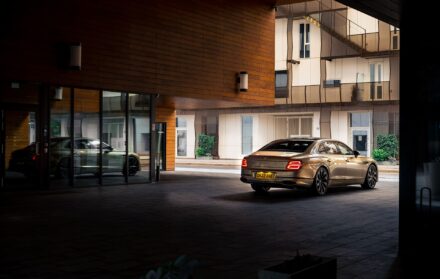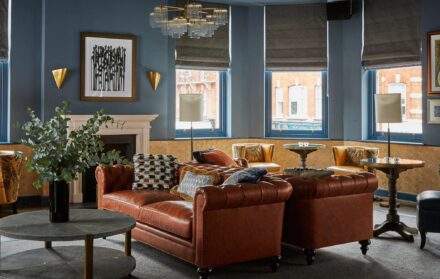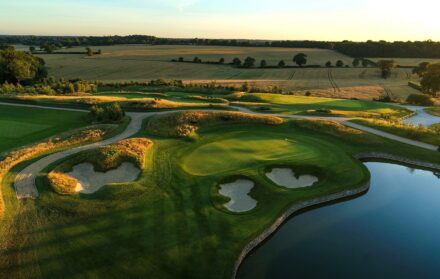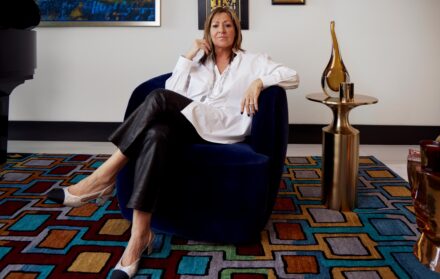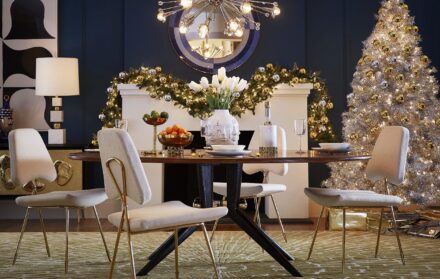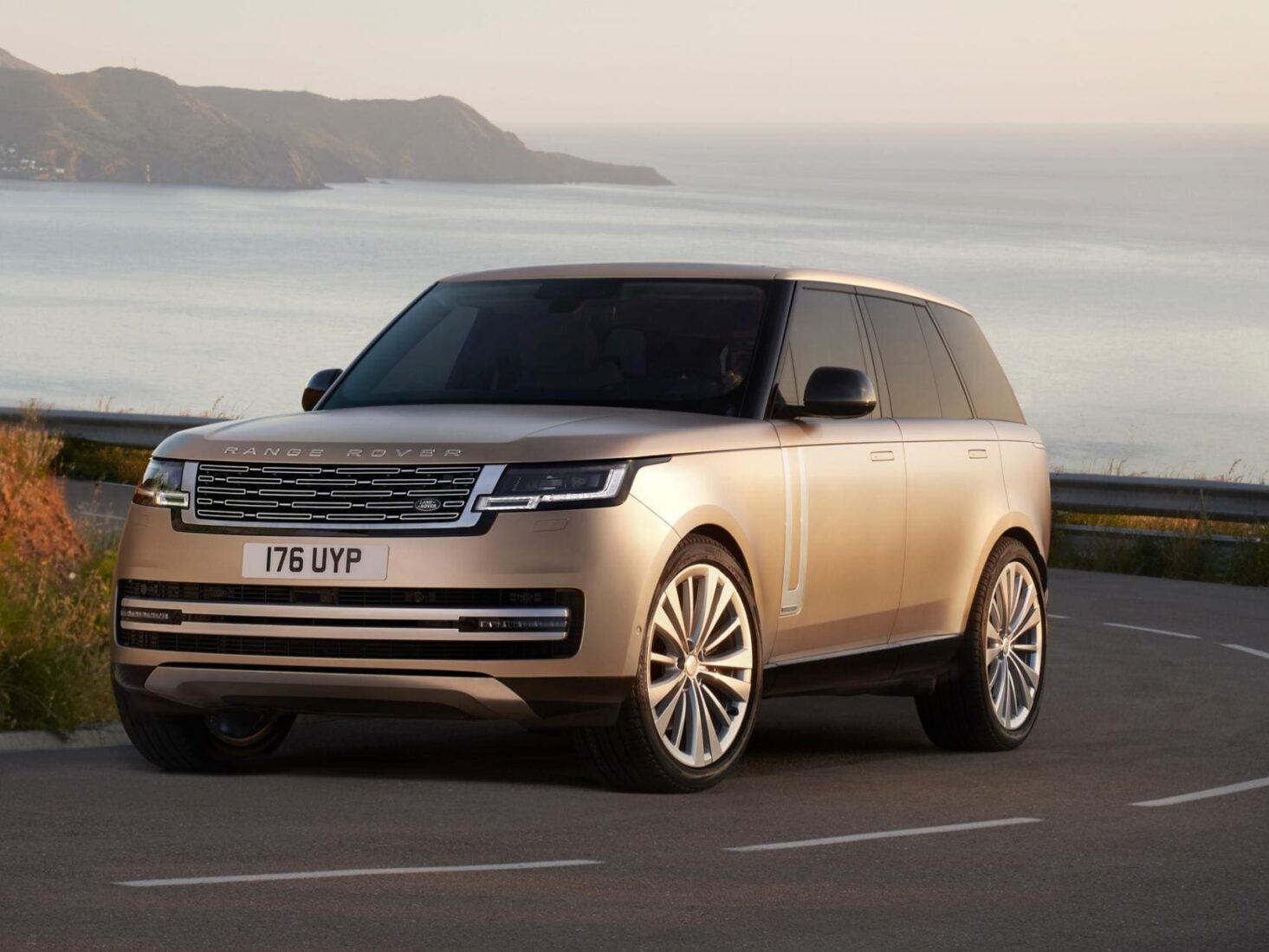
Jaguar Land Rover’s Professor Gerry McGovern on the new 2021 Range Rover
"There's a lot of other brands out there, but, quite frankly, they can do what they want because Range Rover is unique – there's simply nothing else like it"
The vast majority of car launches slip by unnoticed by the general public. There are, however, a select few that bear global significance. The grand reveal of an all-new Range Rover is one such event. Now, 51 years after the original car first rolled off the production line, the latest iteration of the landmark off-roader has arrived.
Before the car’s grand public reveal on 26 October, Luxury London was invited to the company’s headquarters in Gaydon, Warwickshire, for a behind-the-scenes preview. There, Jaguar Land Rover Chief Creative Officer, Professor Gerry McGovern, walked us through the design and significance of what surely will be the new benchmark in off-road luxury.
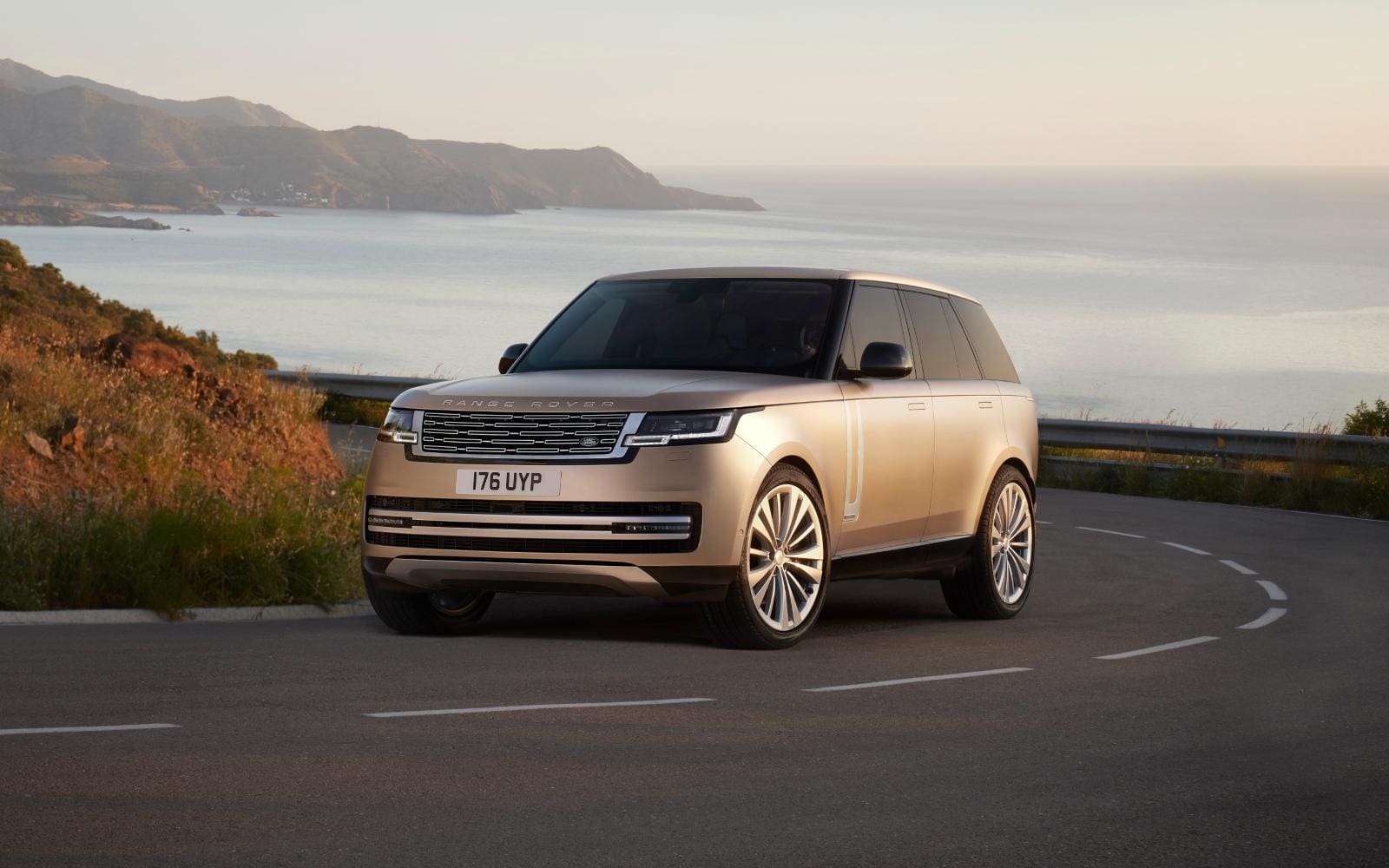
“When the Range Rover was first introduced, it was regarded as the first luxury 4×4,” says McGovern in a cavernous, studio-lit design chamber. Beside him, it’s possible to make out a familiar silhouette, hidden under a dark grey silk cover. “I think it was probably seen as a little bit of a novelty to begin with – a little bit quirky – something that appealed to a particular type of clientele. But over time, it’s created an indelible stamp on the psyche of the country, because it hasn’t changed too much – it’s evolved. It’s always been consistent with what it’s been about.”
When the original, boxy Range Rover first broke cover half-a-century ago, there was very little in the way of competition. There was the Jeep Wagoneer in the USA but, in reality, nothing compared to the go-anywhere ability of the Range Rover, which could be used on the farm during the day and then driven to the opera in the evening. Fifty-one years on, McGovern insists that the Range Rover’s reputation remains unchanged.
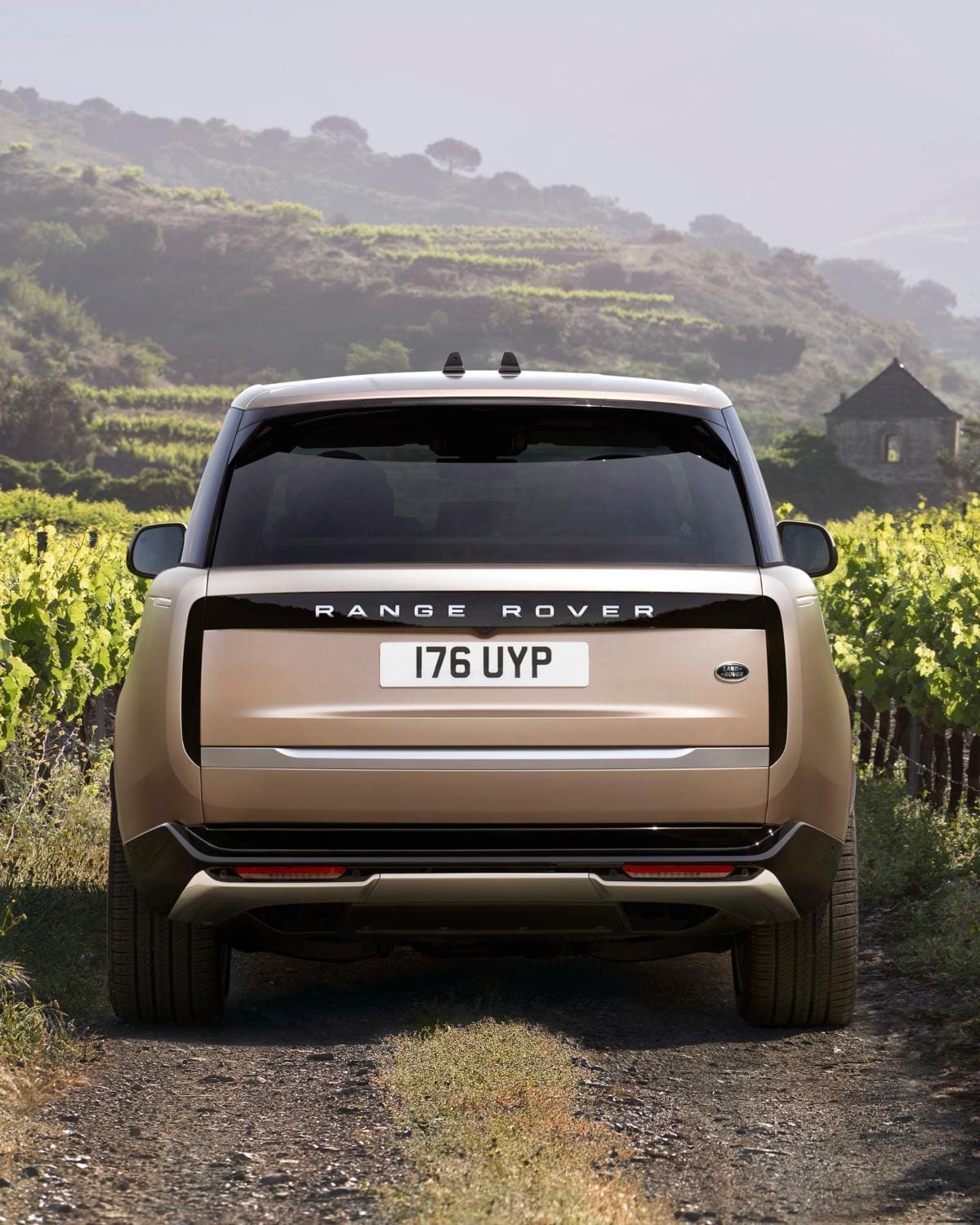
“It might seem like a contradiction, but the Range Rover has established itself as classless over time. This is a vehicle that you can drive to Monaco and park next to the most exotic vehicles in the world, yet it won’t feel or look inferior because it’s not trying too hard. Because of its distinctive silhouette and its values, I think the Range Rover has a level of respect with people who appreciate it for what it is.”
For the design chief and recently anointed Jaguar Land Rover board member, his involvement with Range Rover started in earnest with the third-generation model, which arrived in 2001 under the direction of BMW, the then owners of the Land Rover brand.
“The third iteration was an interesting experience,” says McGovern. “I think it developed a real solidity at that point but the fourth one [2012] took it to another level. For me, though, this fifth edition is the best because of how it moves the game on.”
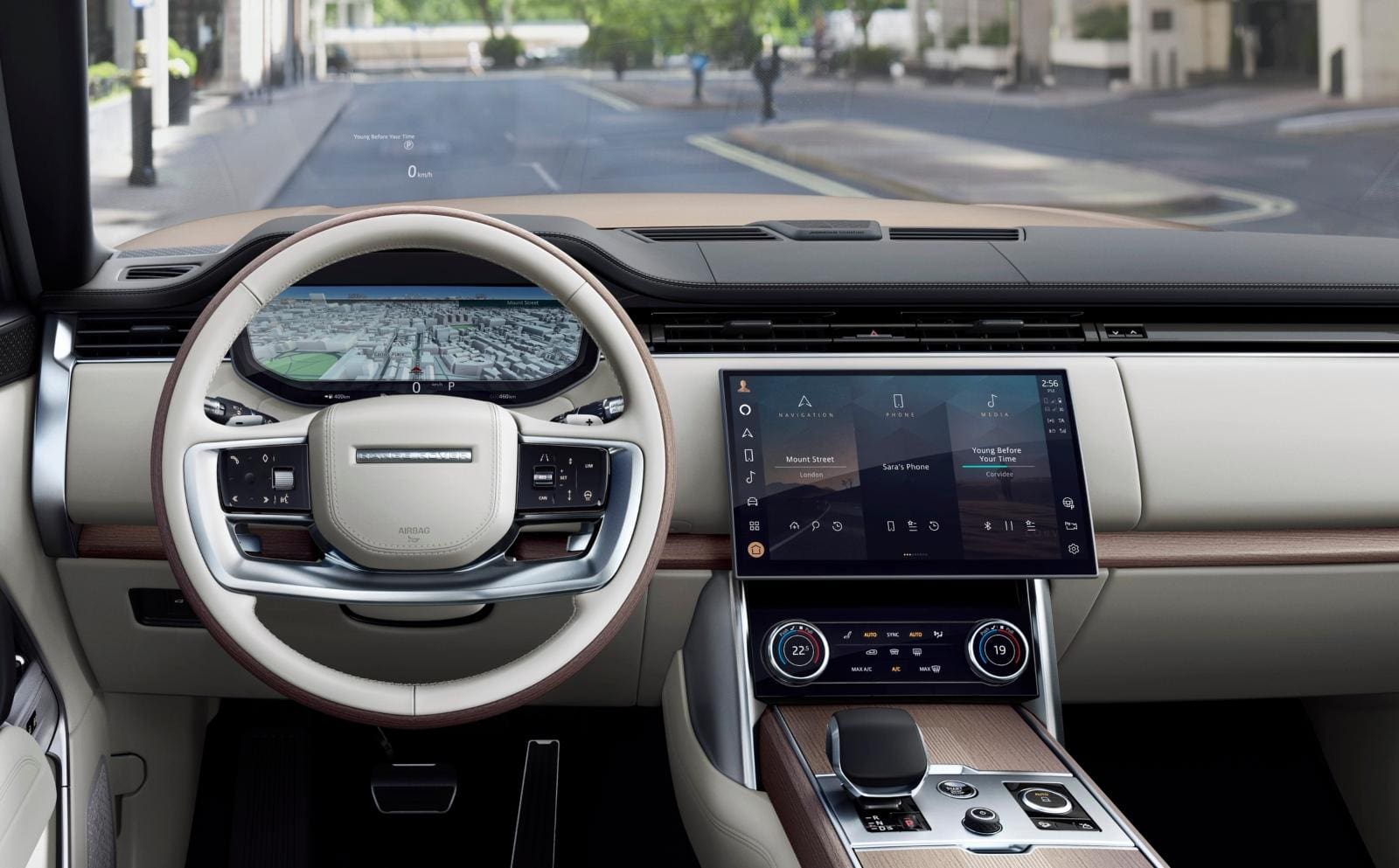
The covers are pulled off, and there sit three shiny new Range Rovers under spotlights, slowly rotating on giant turntables. Sporting completely flush glazing and clean, expansive bodywork, void of all but essential lines, the aim, McGovern explains, was to create a “milled-from-solid” overall aesthetic. Looking at the front three-quarters, the car – while noticeably much cleaner – is not a vast departure from the current model, with its side profile, grille and light configuration still very familiar. Edge towards the rear, however, and this model’s most significant and striking feature soon becomes clear. Tapering like a boat tail, the rear of the car is defined by new, vertical taillights, which are encased in a single, gloss-black panel that wraps around the lower tailgate, defining the width of the car.
From all angles, it’s evident that McGovern and his team have gone to great lengths to hide or disguise any unnecessary lines – something the design boss calls “reductive design”. As a complete package, the Range Rover is an extraordinary exercise in clean and confident styling, with its vast, lineless surfaces defying convention and taking aim at rivals which suffer, as McGovern claims, with “an abundance of line work.”
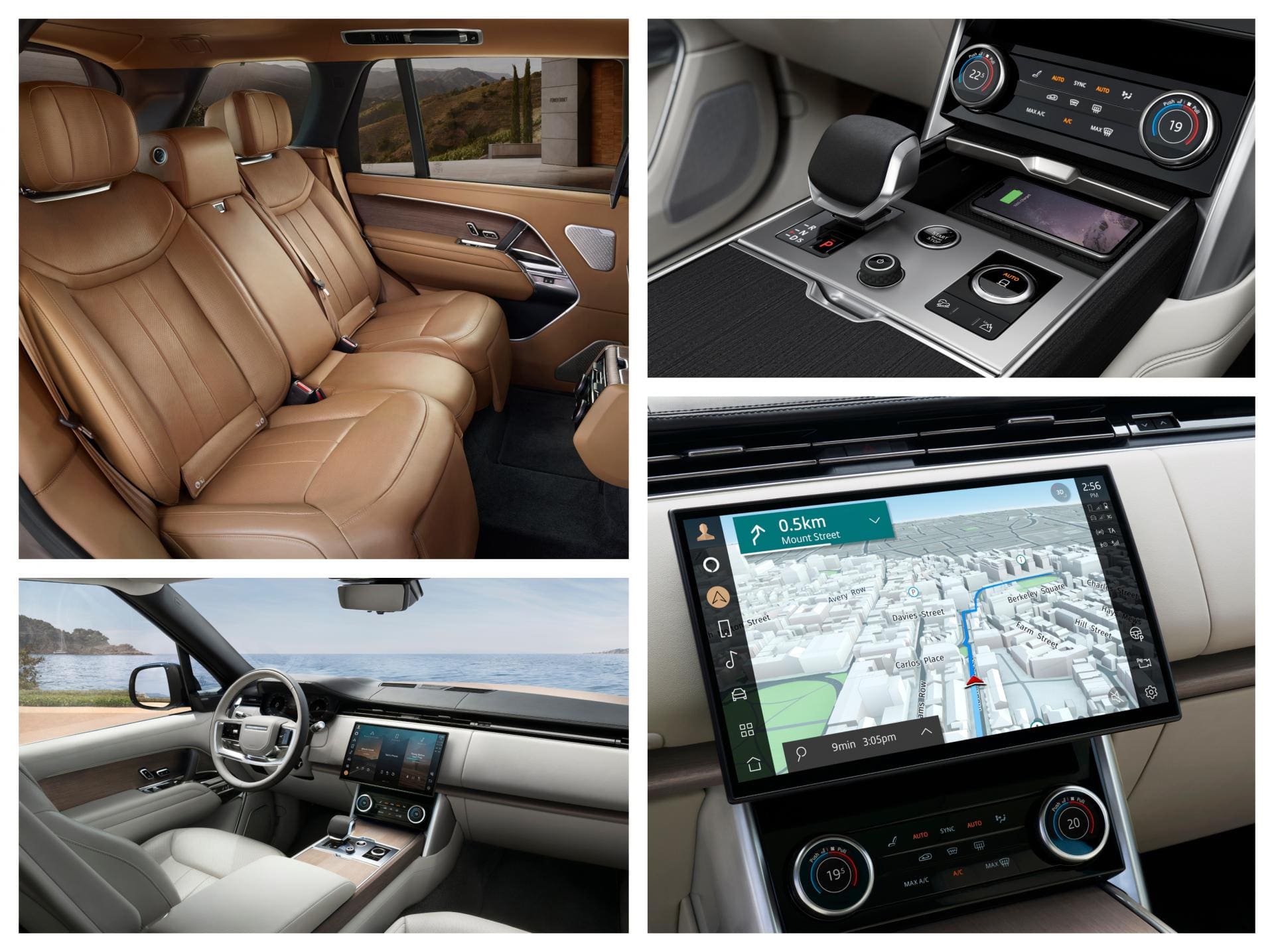
It’s outside the studio that McGovern claims the Range Rover will have the biggest visual impact. “Seeing this car driving down the road, in Mount Street or Pall Mall for example, is where it will really stand out because it’s so honed,” he says, gesturing to the point at which the bodywork seamlessly meets the flush glazing. “Put simply, it’s honed to within an inch of its life.”
On the inside, it’s a similar story. “I feel quite strongly that car interiors need to be calming in this world of 24/7 connectivity,” says McGovern. “If it’s going to be a luxury experience, it should be intuitive and it should put you at ease – you should be incredibly comfortable and calm inside it.”
Like the exterior, the interior is an exercise in minimalism. Sitting pride of place in the cockpit is a 13.1″ curved, floating touchscreen housing Land Rover’s Pivi Pro infotainment system, from which all the main vehicle functions are controlled. Only the climate control can be adjusted by hard switches, which sit beneath the screen.
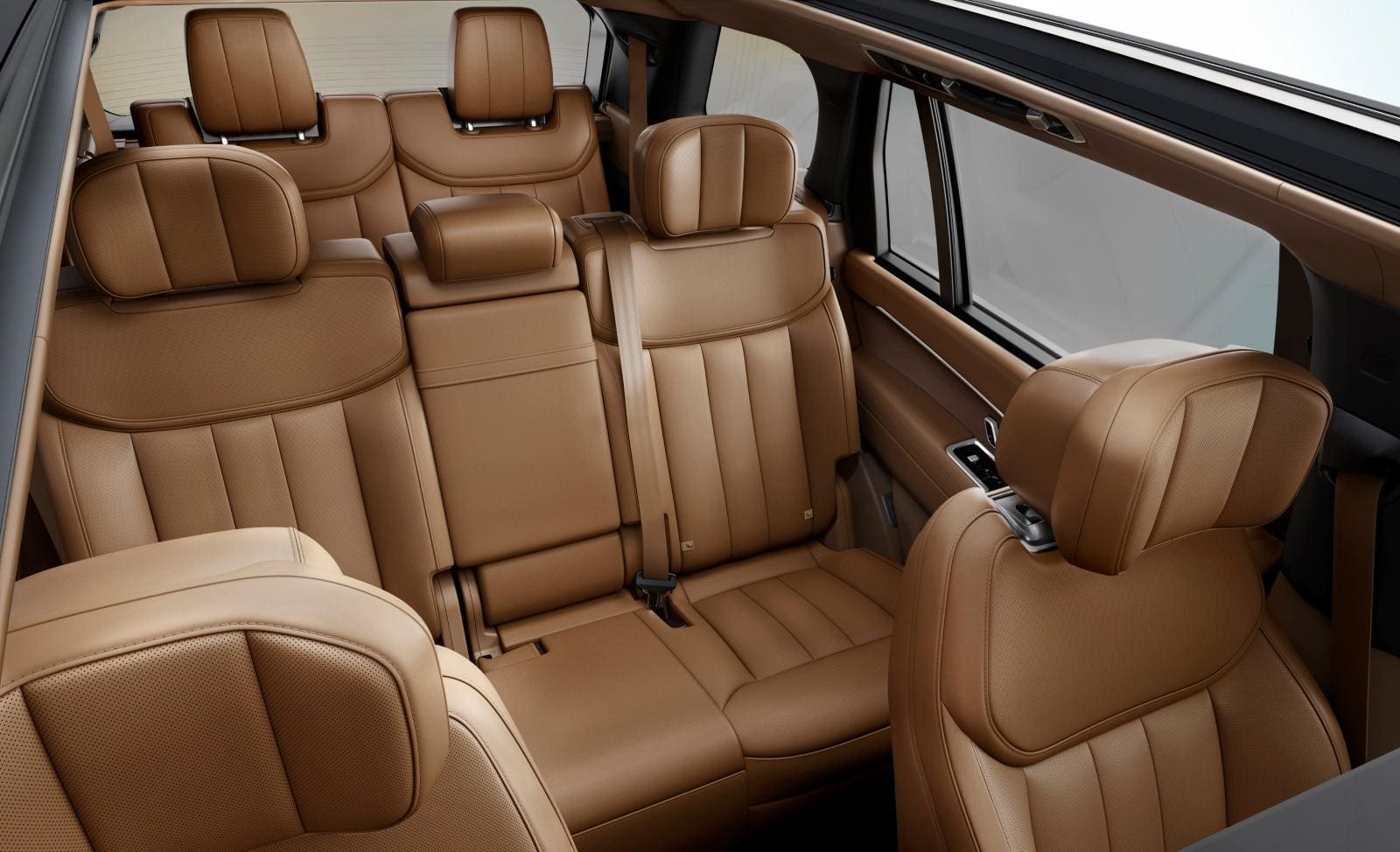
“It’s about creating a calm sanctuary through the rigour of our modernist approach to design,” says McGovern. Aside from the sanctity of the interior, the new long wheelbase Range Rover will come with the option of seven seats – something McGovern initially didn’t believe Range Rover owners would want. With room for seven adults on three rows of seats, the car is also available with a range of electrified powerplants ahead of the arrival of the first purely electric model in 2024.
While few, if any, owners will use this ultra-high-tech and sculptured generation of Range Rover as a farm-vehicle-cum-opera-taxi, it’s clear that McGovern and his team have aimed for evolution, rather than revolution.
“Our clients said, ‘don’t change it, just make it better’,” says McGovern. “When it comes to fashion and trends, we don’t do that. The design and the whole essence of the car is informed by this modernist design philosophy combined with the evolution of Range Rover over the past 50 years.”
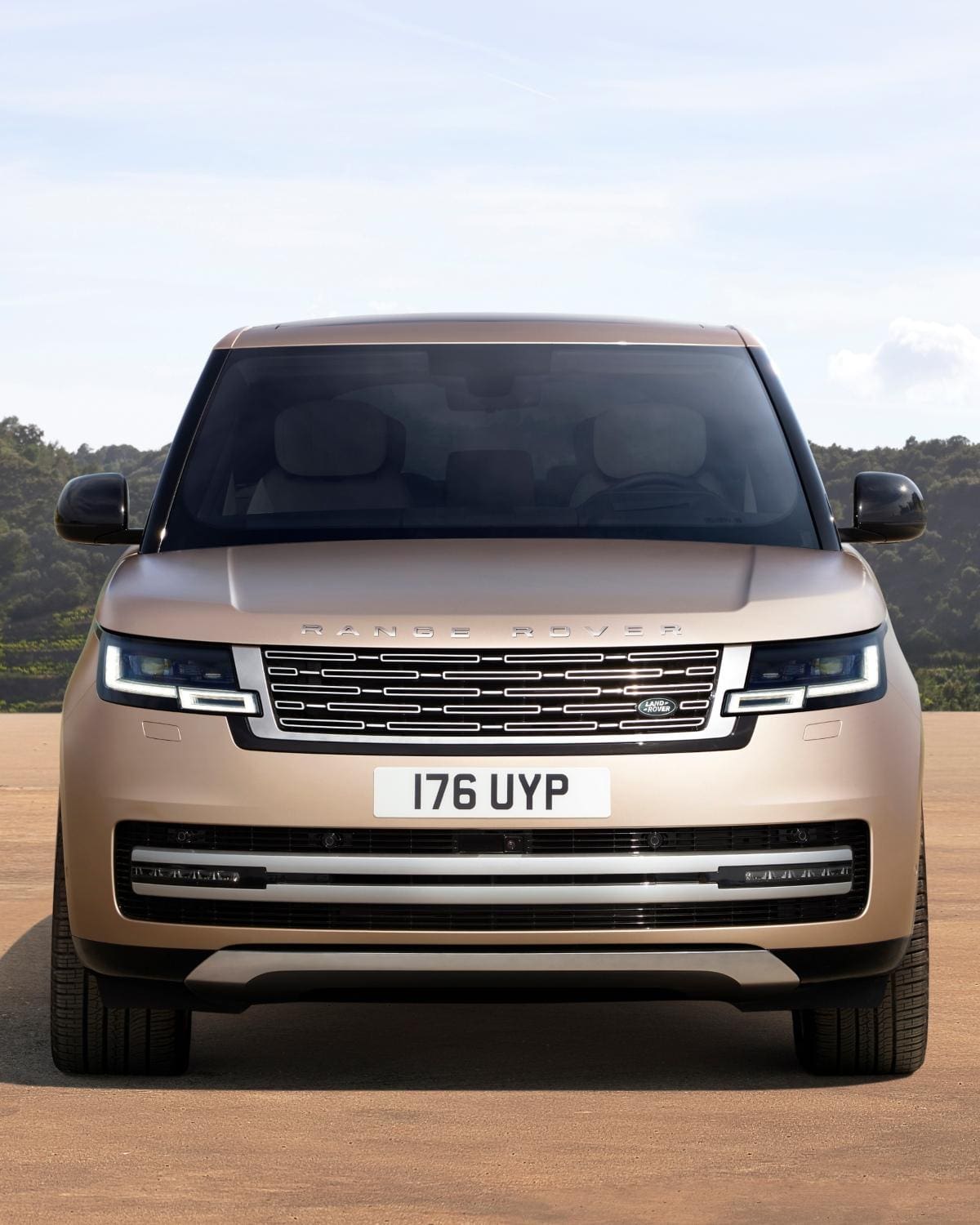
As the size, level of finish and technologic capabilities of Range Rovers have developed, so too have their asking prices. The current model starts at £83,500. Prices for the new iteration will shoot steadily up from £94,400. With a few extras, the new car is thrust into a space co-inhabited by the Bentley Bentayga, Lamborghini Urus, Mercedes G-Wagen and Aston Martin DBX. It’s worth noting that all of those competitors, aside from the G-Wagen, sprung up within a three-year period following the launch of the current Range Rover – demonstrating just how fast the super-SUVs arms race hotted up.
What was once the undisputed – and unchallenged – King of the Off-Road now faces seriously capable competition. “There’s a lot of other brands out there, of course,” says McGovern. “But, quite frankly, they can do what they want because Range Rover is unique – there’s simply nothing else like it and that’s what we need to nurture.”
The Vitals
For the entry-level 3.0L diesel version:Engine: 6 cylinder, 24 valve direct injectionMax power: 183kW/249 psMax torque: 600 nmTransmission: 8-speed automaticOverall length: 5,052 cmOverall height: 1,870 cmWeight: 2,455 kg0-62mph: 8.3mphTop Speed: 128mphPrice: £94,400
Read more: The Bentley Continental Speed is a real-world supercar




